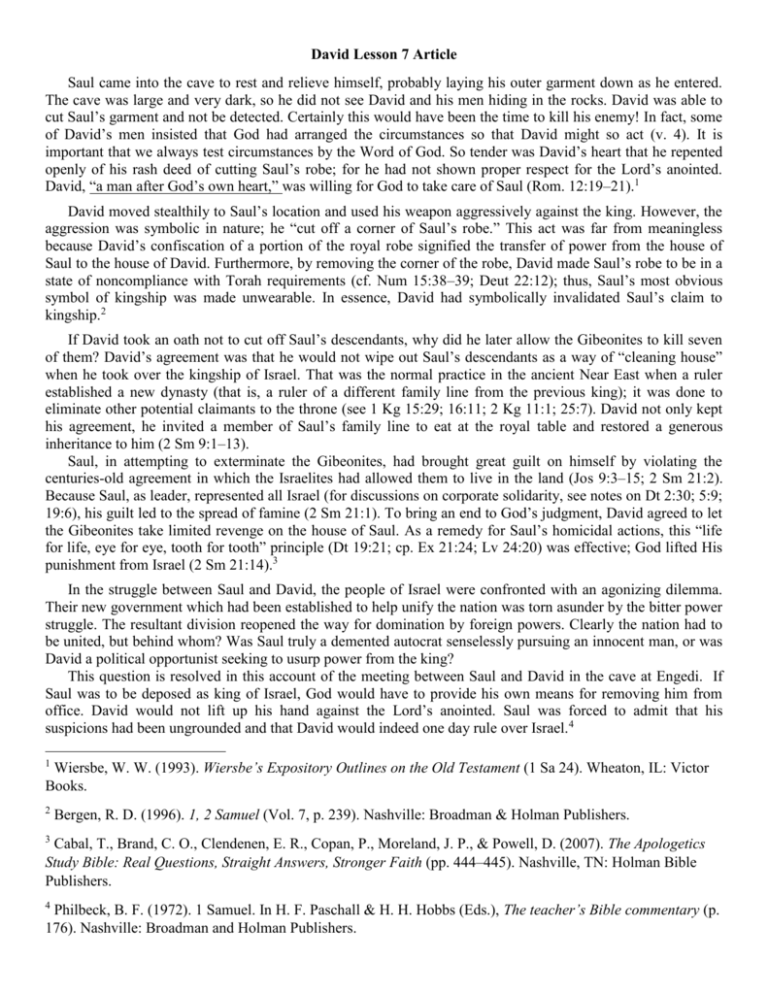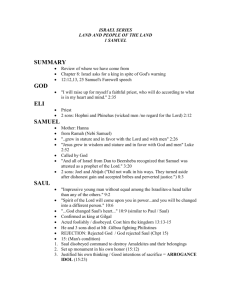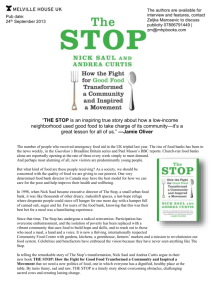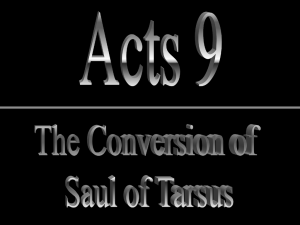Article # 7
advertisement

David Lesson 7 Article Saul came into the cave to rest and relieve himself, probably laying his outer garment down as he entered. The cave was large and very dark, so he did not see David and his men hiding in the rocks. David was able to cut Saul’s garment and not be detected. Certainly this would have been the time to kill his enemy! In fact, some of David’s men insisted that God had arranged the circumstances so that David might so act (v. 4). It is important that we always test circumstances by the Word of God. So tender was David’s heart that he repented openly of his rash deed of cutting Saul’s robe; for he had not shown proper respect for the Lord’s anointed. David, “a man after God’s own heart,” was willing for God to take care of Saul (Rom. 12:19–21).1 David moved stealthily to Saul’s location and used his weapon aggressively against the king. However, the aggression was symbolic in nature; he “cut off a corner of Saul’s robe.” This act was far from meaningless because David’s confiscation of a portion of the royal robe signified the transfer of power from the house of Saul to the house of David. Furthermore, by removing the corner of the robe, David made Saul’s robe to be in a state of noncompliance with Torah requirements (cf. Num 15:38–39; Deut 22:12); thus, Saul’s most obvious symbol of kingship was made unwearable. In essence, David had symbolically invalidated Saul’s claim to kingship.2 If David took an oath not to cut off Saul’s descendants, why did he later allow the Gibeonites to kill seven of them? David’s agreement was that he would not wipe out Saul’s descendants as a way of “cleaning house” when he took over the kingship of Israel. That was the normal practice in the ancient Near East when a ruler established a new dynasty (that is, a ruler of a different family line from the previous king); it was done to eliminate other potential claimants to the throne (see 1 Kg 15:29; 16:11; 2 Kg 11:1; 25:7). David not only kept his agreement, he invited a member of Saul’s family line to eat at the royal table and restored a generous inheritance to him (2 Sm 9:1–13). Saul, in attempting to exterminate the Gibeonites, had brought great guilt on himself by violating the centuries-old agreement in which the Israelites had allowed them to live in the land (Jos 9:3–15; 2 Sm 21:2). Because Saul, as leader, represented all Israel (for discussions on corporate solidarity, see notes on Dt 2:30; 5:9; 19:6), his guilt led to the spread of famine (2 Sm 21:1). To bring an end to God’s judgment, David agreed to let the Gibeonites take limited revenge on the house of Saul. As a remedy for Saul’s homicidal actions, this “life for life, eye for eye, tooth for tooth” principle (Dt 19:21; cp. Ex 21:24; Lv 24:20) was effective; God lifted His punishment from Israel (2 Sm 21:14).3 In the struggle between Saul and David, the people of Israel were confronted with an agonizing dilemma. Their new government which had been established to help unify the nation was torn asunder by the bitter power struggle. The resultant division reopened the way for domination by foreign powers. Clearly the nation had to be united, but behind whom? Was Saul truly a demented autocrat senselessly pursuing an innocent man, or was David a political opportunist seeking to usurp power from the king? This question is resolved in this account of the meeting between Saul and David in the cave at Engedi. If Saul was to be deposed as king of Israel, God would have to provide his own means for removing him from office. David would not lift up his hand against the Lord’s anointed. Saul was forced to admit that his suspicions had been ungrounded and that David would indeed one day rule over Israel.4 Wiersbe, W. W. (1993). Wiersbe’s Expository Outlines on the Old Testament (1 Sa 24). Wheaton, IL: Victor Books. 1 2 Bergen, R. D. (1996). 1, 2 Samuel (Vol. 7, p. 239). Nashville: Broadman & Holman Publishers. 3 Cabal, T., Brand, C. O., Clendenen, E. R., Copan, P., Moreland, J. P., & Powell, D. (2007). The Apologetics Study Bible: Real Questions, Straight Answers, Stronger Faith (pp. 444–445). Nashville, TN: Holman Bible Publishers. Philbeck, B. F. (1972). 1 Samuel. In H. F. Paschall & H. H. Hobbs (Eds.), The teacher’s Bible commentary (p. 176). Nashville: Broadman and Holman Publishers. 4








